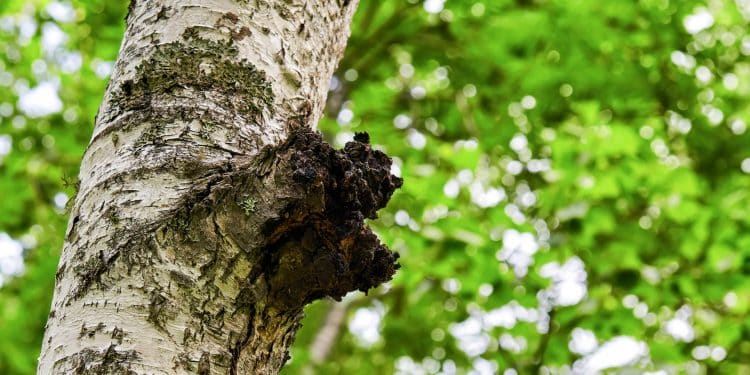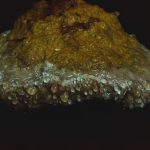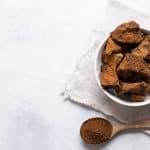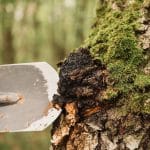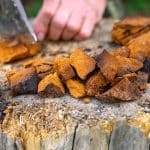Chaga mushrooms are found most often in White Birch and Yellow Birch Trees, and as soon as you have found a birch tree stand, it is likely that there are chaga mushrooms in there. Chaga mushrooms are found all around the world. As mentioned, Chaga mushrooms are found growing on White Birch and Yellow Birch, although a very similar-looking fungus (fools chaga) may be found growing on other types of trees. Chaga looks like a lump with black, rough texture that sticks out from the side of the birch.
How to Identify Chaga Mushroom
In fact, if you saw chaga, you would probably assume that it was just a large area of rotting wood, since it looks like a burned-out blister on top of the birch trees white bark. It grows mostly on yellow-brown birches, which are easy to recognize. In particular, chaga is found most often on paper (Betula papyrifera) and yellow (Betula alleghaniensis) birch trees. In higher-elevation areas farther north, the mushroom is found on paper-leaf (Betula cordifolia) trees.
What Tree Does Chaga Grow On?
Chaga grows particularly on species of Birch across the Northern Hemisphere. A parasitic mushroom, the fungus attacks birch trees in hardwood forests throughout the Northern Hemisphere, thriving in colder climates. Chaga is a parasitic fungus found in birch tree species (Betula). Chaga (scientific name: Inonotus obliquus) is a large mushroom commonly found on yellow and white birch trees; it has black carbon exterior with a gold color interior.
What we refer to as chaga is the thick black mass you see on the exterior of trees that are (almost exclusively birch) infected with the pathogenic Inonotus obliquus fungus. Once the infection takes hold, the chaga mushrooms begin growing towards the outside of the white and yellow birches, eventually breaking through the bark and growing into a barren black scab, or tumour, on the trees trunk. Chaga continues to grow until it has completely blocked sap flow inside of the tree, killing it. In fact, chaga mushrooms are the only species to exhibit this growing behavior when growing on these types of trees, so you should not be concerned that you are mistaking this one for another species.
The closest looking mushroom is the closest potential resemblance, and the medicinal mushroom that I am calling chaga’s sister, called Meshimaphellinus linteus (also known as Mesima), is a lymphatic system cleanser, that helps breast cancer, and hypohidrosis (will be discussed in upcoming newsletters). Lions mane, chaga, chicken of the woods, morel, and oyster mushrooms are among a few such species which are easy both to identify and use.
You can find our favorite capsules, powders, and tincture’s on the following pages of our website and learn more about each individually:
Best Chaga Mushroom Supplement
Additional Resources:
Does chaga mushroom have caffeine?
How long can you store chaga mushroom?
Updated 10/24/2022
